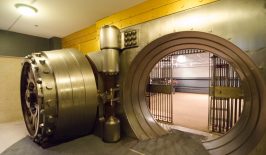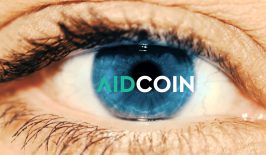MineSpider, a Berlin-based startup, is using distributed ledger technology to tackle the tricky problem of how to track where minerals come from and where they end up.
Land grabbing, corruption, unethical supply chains. These are just a few of the issues where blockchain can be leveraged for positive change – thanks to its increased transparency, immutability and verifiability when compared to existing methods of record-keeping. MineSpider is a platform set up to tackle one of these issues in particular – the continued extraction and sale of so-called “conflict minerals” – materials that are obtained within the context of armed conflict and human rights violations such as slavery and child labour.
While the EU has introduced legislation that requires business to practise due diligence when it comes to conflict minerals, enforcing this in reality is incredibly tricky because conflict minerals are not uniquely identifiable and may end up being mixed with materials from responsible, “clean” sources. Many conflict minerals still enter the market and end up in products such as laptops and mobile phones.
We talked to MineSpider’s founder, Nathan Williams, to find out more about how their platform works.
If you had to explain what it is you are doing to someone who does not understand what blockchain is, how would you do it?
MineSpider is making a system for tracking responsibly-sourced minerals and raw materials along the supply chain. It allows companies to be sure that the money they pay for the materials is not funding civil wars, slavery, child labour or is damaging the environment.
Unlike diamonds, handbags, or antique cars, minerals are not uniquely identifiable. We can put them in a container with a tag and track a shipment, but at some point, we need to open the container and refine them into metal. Our solution is to treat the metals similarly to green energy on the electrical grid.
If we purchase green electricity, it will come to our house from the grid, mixed with coal and nuclear power. However, by tracking the amount produced, we can guarantee that our money goes to the green energy company. So, by tracking the production from the responsible mines we can ensure that the money paid for the metals has funded responsible sources, even if the metal itself becomes mixed at some point.
MineSpider allows responsible mineral producers to create digital blockchain certificates for the amount of the metal they produce. When the minerals are sold, bought, or refined, these actions are recorded forever with the MineSpider blockchain protocol.
Could you explain the whole process?
Minespider is a supply chain protocol that was designed to be run on a public blockchain, like the Internet but for the supply chain due diligence data.
First, a mine is registered on the MineSpider protocol by a trusted certifier. This can be a state official or a third party that is recognized by the industry. Once registered, the mine uses the MineSpider Distributed App to upload their certifications, audit reports, state license, etc. into a digital certificate for every shipment of material they produce.
When one of their customers purchases a shipment of material, they also purchase the keys to access this data, adding their own data to the record. This process continues as the material is bought and sold through the supply chain, providing an immutable link for each new owner of the material, back to the mines of origin.
The protocol protects the data of a company, throughout the supply chain, from being seen by competitors, even though it runs on a public blockchain. Each new company that purchases mineral data receives a set of electronic keys to access the data that is posted publicly but was encrypted with their public key. In this way, no company, not even MineSpider, controls or sees any other company’s sensitive supply chain data. A company has control and access only to the data that has been purchased from its suppliers, even though it runs on a public blockchain.
Will this solution benefit just big companies, or the small providers too?
Right now, the largest companies are taking action to make sure that they source responsibly. The way they often do it is with questionnaires, attempting to map their supply chain backwards, for example by asking their suppliers if their products are responsible, and recording the answers in an Excel sheet. If their suppliers aren’t sure about it, they need to ask the same question to the supplier of their suppliers and the process is repeated. This process only tracks which companies are in the supply chain, not the shipments themselves. It is expensive, slow, and not 100 per cent reliable.
MineSpider works the other way around: it starts at the point of origin, tracking the material throughout the supply chain. Mines can effectively sell their diligence data along with mineral shipments, just like any other commodity. This allows smaller companies to participate in responsible sourcing by reducing the cost and complexity of knowing where minerals come from, as well as providing an income stream for responsible producers, incentivizing them to participate in responsible sourcing practices.
How did you come up with the idea and how was it developed?
Whenever you are working on a new startup idea it’s always healthier to spend more time exploring the problem than coming up with the solution. I spent a long time exploring the problem of conflict minerals and trying to get a full understanding of it before I came up with MineSpider in its current form.
My previous company was a software platform that has tracked the regulatory status of chemicals and many of my contacts had the problem of tracking the origin of their metals, making sure they were not funding armed conflict. I have always found emerging technology interesting and I was sure that there was an opportunity for an application here for blockchain, but I wasn’t sure exactly how it would work at first.
In early 2017 the Washington Post published an article talking about the problem and so I emailed everyone quoted in the article, asking them what they felt the biggest problems were, what had been done already, what worked, what hadn’t worked, and what the biggest pain points were. This was the beginning of a long exploratory process where I had to learn as much as possible about the mineral industry, conflict mineral policy, the blockchain technology and how to apply it. It took about a year, but because I spent the time, my white paper was cited by the Responsible Mineral Initiative in their blockchain guidelines. I was introduced to most of the major players in the electronics, automotive and gold industries because I had the right solution.
In 2021, the ‘Conflict Minerals Regulations’ law will come into full force across the EU. How is that going to affect your project?
Mineral importers in the EU are going to need a solution to demonstrate that their metals are not funding armed groups in the Congo, if they are going to be compliant with it. Most smaller companies do not have the resources to send people to inspect the mines, smelters, and middlemen in their supply chain, so they will need this data included in the purchase of the metal.
The problem of conflict minerals is not new and the EU regulation follows a similar regulation in the US, as well as guidelines from the OECD. For some time, there has been public desire to know that their goods aren’t funding illicit sourcing practices and the EU regulation is just the next step of the regulatory pressure on companies to act on the problem. The real difference between the current EU regulation and the US one, that was passed 10 years ago, is that blockchain is now a viable tool to enable the traceability that the industry requires.
You are planning to create a cryptocurrency. Why are you planning to create a new one rather than using one already on the market?
Cryptocurrencies, tokens, and coins are useful for payment, but they have several other uses. If we used an existing cryptocurrency our system would work based on the rules of that cryptocurrency. So for many projects that might be fine, but for projects like Minespider, having more control over what the cryptocurrency does, and what it can be used for, is important.
For example, we are trying to “decentralize” MineSpider, or in other words, make it run properly without having one person or company in control. To do this, we allow companies to hold a certain amount of crypto tokens in order to give them the right to participate in the system. This is called “staking”. If a participant then acts improperly by putting in fake data, for example, the other participants can vote that they would lose that cryptocurrency. This provides a mechanism for self-regulation.
What is the current status of the project? And your next challenges?
We are now in late 2018 and are setting up our first pilot projects to demonstrate the concept. It has been a long road, and in the next few quarters, we will be growing the team, securing the next round of investment, preparing a token sale, and executing our first pilot projects with our partner organizations.





